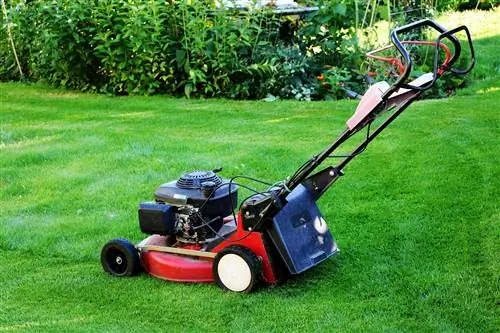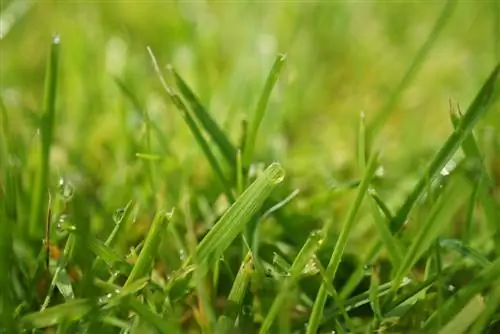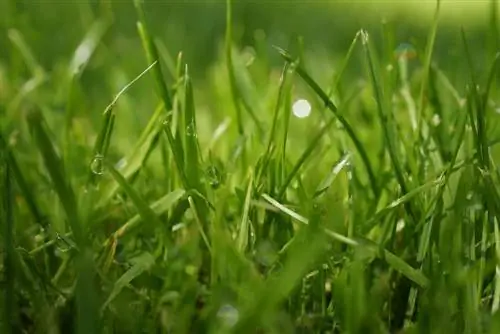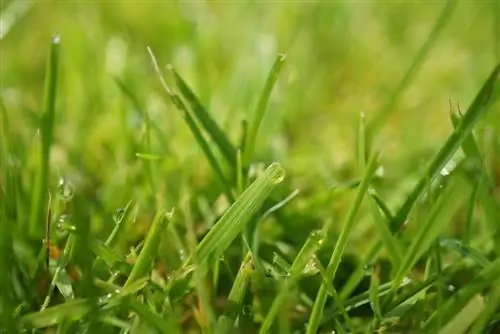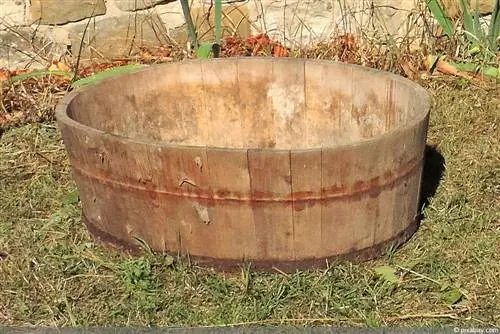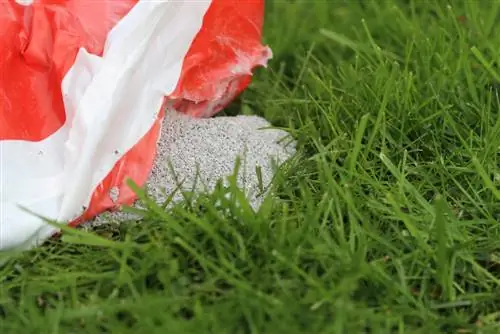- Author admin [email protected].
- Public 2023-12-17 03:39.
- Last modified 2025-01-24 12:45.
A beautiful, lush green lawn is often the eye-catcher in a garden. However, fertilization is absolutely necessary for this. Contrary to popular belief, fertilization must be carried out in the summer months and not necessarily in the fall. In this way, the lush, summery green can be preserved. In addition, the individual plants are additionally strengthened. However, it depends on the right summer fertilizer.
Summer fertilization
All plants need nutrients to grow and thrive. They usually get them out of the ground. However, the nutrient repertoire in the soil is exhausted at some point. Consequently, nutrients must be added. This is usually done by giving fertilizer. The intensity of fertilization varies from plant to plant. The lawn in the garden should be fertilized twice a year. The first fertilization takes place in spring so that the grass can recover from the stresses of winter. Many people believe that the second fertilization should be done in the fall. However, this is a mistake. If you really want to do something good for your lawn, fertilize it not in autumn, but in summer. The months of June, July, August and the first half of September are suitable for this.
Note:
Lawn fertilization in October or later should be an absolute exception and should only be done on heavily used lawns such as a football pitch.
The reason for summer fertilization: During the summer months, grass growth is in full swing. In a sense, it's running at full speed. Of course, a lot of nutrients are needed for this. If these nutrients are missing, growth inevitably suffers - and of course the overall appearance of the lawn. Basically, the lawn goes into the fall and winter rest period weakened without the addition of summer fertilizer. Subsequent fertilization cannot optimally compensate for this condition. By the way, summer fertilization also ensures that the grass remains a lush, often almost bright green.
Summer fertilizer
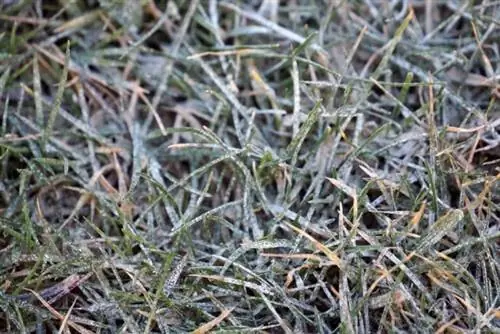
When it comes to summer fertilization, two aspects are particularly important: using the right fertilizer and the timing. In general, you can't go wrong with an organic fertilizer. It is also particularly suitable for high heat. However, you should avoid mineral fertilizers in summer as they can accelerate the burnout of the lawn. In addition, over-fertilization can easily occur. There is also a risk that the soil quality will be damaged in the medium term by mineral fertilizers.
Tip:
Mineral fertilizer should generally no longer be used after August.
The type of soil on which the lawn grows is also important. This largely depends on how much fertilizer can or should be administered.
The following assignment has proven successful:
- light sandy soil: Fertilization in August with 50g/square meter
- medium-heavy soil: Fertilization in August with 50g/square meter
- medium clay soil: Fertilization in August with 60g/square meter
- heavy clay soil: Fertilization in August with 80g/square meter
The basis for this information is always that the first fertilization took place in spring. This is recommended in the months of April and May. If it is not possible to fertilize your lawn in August, you can do so in June. However, the month of July is absolutely unsuitable as it is usually the hottest and driest month.
Tip:
When buying lawn fertilizer, you should definitely give preference to organic fertilizer of organic quality.
Time
Choosing a month obviously only roughly defines the right time for fertilizing. In order for the fertilizer application to really work and not fizzle out ineffectively or even cause damage, a few factors have to come together, especially in summer. The following advice can also be seen as fertilizer tips in high heat:
- never fertilize in full sun or during midday
- Use the rather cool morning hours to spread the fertilizer
- do not apply fertilizer to very dry soil
- If possible, water the area well before applying fertilizer
- Use rather cool days or rainy days
- When fertilizing, be sure to base your fertilization on the current weather (temperatures)
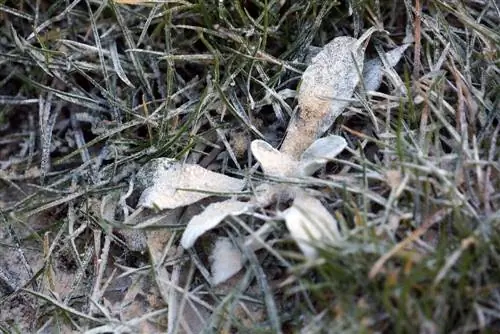
It should have become clear that the right time depends to a large extent on the weather. Heat and drought are not good conditions for fertilizing a lawn. It is therefore advisable to pay particular attention to weather fluctuations in summer and, if necessary, to take action at short notice when it cools down. If this is not possible for whatever reason, you should definitely use the very early morning hours for fertilization. Since it is known that it gets light outside very early during the summer months, this shouldn't be a problem. The supposedly cool evening hours, however, are less suitable, as the ground is still very heated by the sun at this time.
After fertilization
Immediately after spreading, the lawn fertilizer is naturally on the soil surface. However, the individual grasses there can do very little with it. It therefore has to get into the soil, where the roots of the plants can then absorb the nutrients. The quickest way to achieve this is to water thoroughly after each fertilization. In spring, one or two rain showers can be helpful. There is often a certain amount of soil moisture that dissolves the lawn fertilizer. However, things usually look different when adding summer fertilizer. It is therefore essential that the lawn is supplied with water immediately after fertilization. It is also advisable to treat the lawn as gently as possible in the following days.

